1903 Search Results for video of the week
April 22, 2015
by Carole Zangari -
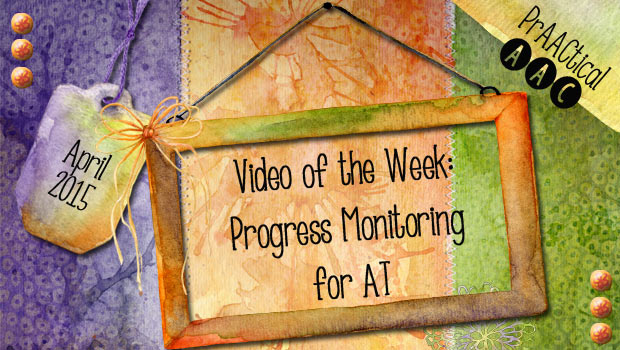
If you work in educational settings, there’s a good possibility and you and and your colleagues have had many conversations around the topic of progress monitoring. Progress monitoring in an approach to assessing student performance and evaluating the effectiveness of instruction. How does that apply to students who use AAC and other AT? Today, we hear from Elizabeth Panek on that very topic. Thanks to the Pennsylvania Department of Education and PaTTAn for making this available.
April 8, 2015
by Carole Zangari -
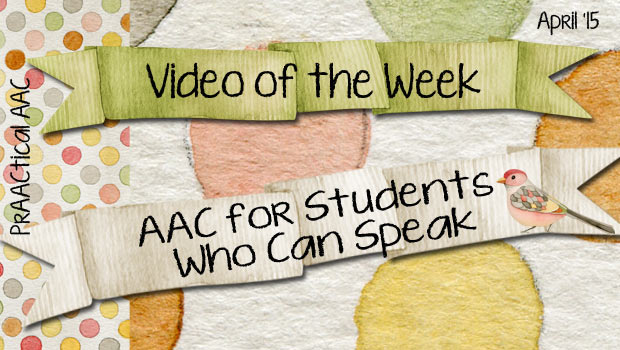
“But my student can speak. Why would we use AAC?” We often get this question from our fellow SLPs, particularly those who work with students who have autism. From the question alone, it seems like AAC is not needed, and would be a step backward for this particular student. But what happens when we dig a little deeper? The last time this question was posed to me, it was about Marcella, an 8 year old with ASD. As the conversation progressed, we learned more about Marcella’s communication profile. Independently, she uses 2-3 word sentences to ask for things she wants (e.g., “Want that popsicle.” “More Dora”) and single words to protest (“No!”). With prompting Marcella uses 1-2 words for greeting (e.g., “Hi Tony”), labelling (e.g., “Dora book”), answer questions, (e.g., “here,” “sunny”) and a few other social purposes. So, what’s the problem? For starters, Marcella is capable of more. In... [Read More...]
April 1, 2015
by Carole Zangari -
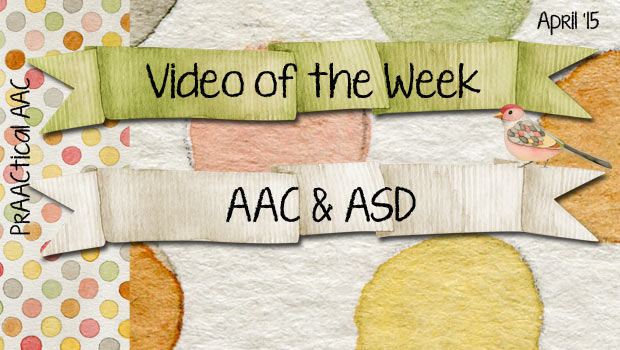
To kick off Autism Awareness and Acceptance month, we turn to a video on AAC and ASD. Thanks to Michael McSheehan and the Institute on Disability at the University of New Hampshire for this helpful video. https://vimeo.com/album/2645578/video/97834273
March 25, 2015
by Carole Zangari -

There is so much to love about this wonderful video from Lindy McDaniel, preschool teacher and author of the fabulous blog, The Considerate Classroom. It is such fun to watch her introduce little Lilly to a new communication aid and assist her in getting comfortable with expanded vocabulary options. From the way she engages with her student, to her use of aided language input, to her skill in behavior management, to the way that she supports the student in interacting with unfamiliar partners, this is a video to savor. Enjoy!
February 25, 2015
by Carole Zangari -
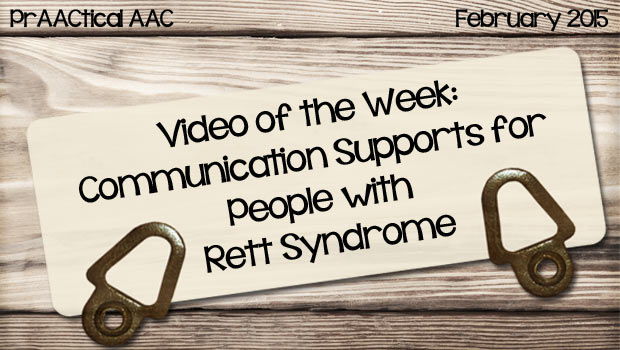
Educational specialist Susan Norwell and OT Judy Lariviere provide a wealth of information on going beyond yes/no and choicemaking to build real communication in girls affected by Rett Syndrome. Thanks to the Rett Syndrome organization for making this video available.
February 18, 2015
by Carole Zangari -
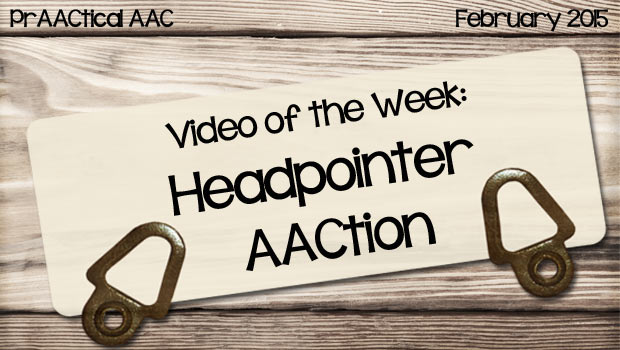
We love seeing AAC in action, especially when we get the chance to peek into a therapy session. Take a look!
February 11, 2015
by Carole Zangari -

How can we integrate technology into the instruction of students with vision impairments and multiple disabilities? Nathalie de Wit, Lead Teacher at the Perkins School for the Blind Lower School has lots of ideas. Alternate: http://www.pathstoliteracy.org/resources/assistive-technology-ideas-students-multiple-disabilities-and-visual-impairments
January 28, 2015
by Carole Zangari -
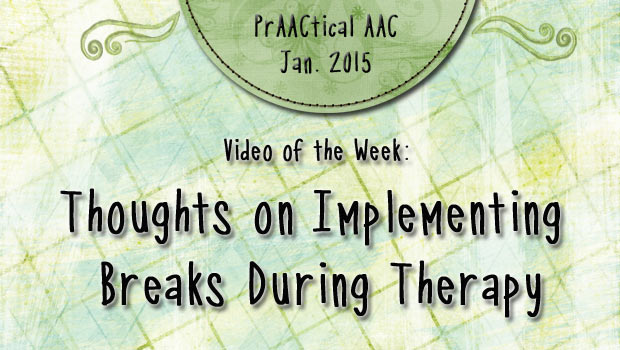
Many learners need a break in order to complete a task or participate in activities. Implementing the break strategy, however, isn’t always as simple as it seems in our textbooks. In this video, Rob Haupt troubleshoots a common issue that sometimes arises.
January 21, 2015
by Carole Zangari -
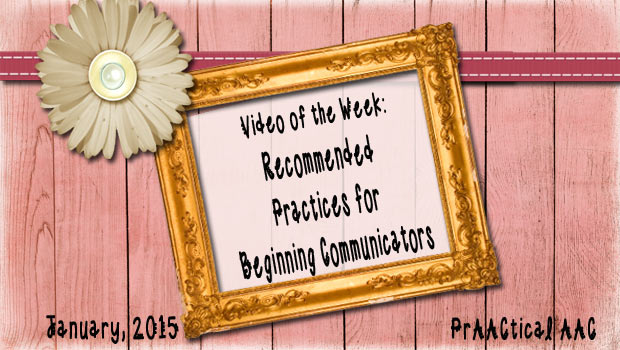
We return to the Institute on Disability at the University of New Hampshire to learn about ways to support beginning communicators. In this video, Dr. Rae Sonnenmeier discusses ways to create communication opportunities, research evidence for key intervention practices, and strategies that communication facilitators can use to support AAC learners at home, in school, and in the community.
January 14, 2015
by Carole Zangari -
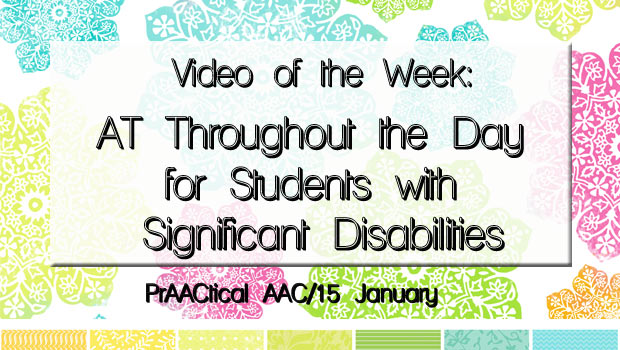
Everyone knows that when it comes to skill development for students with significant disabilities, it’s important to provide a great deal of practice. Making that happen, however, can be challenging, particularly as students get older. Take a look at these ideas shared by the Provisional Inclusion Outreach Program of British Columbia Minstry of Education. Quick Time Required: http://www.pisp.ca/video/videos/High%20School%20Participation.mov









